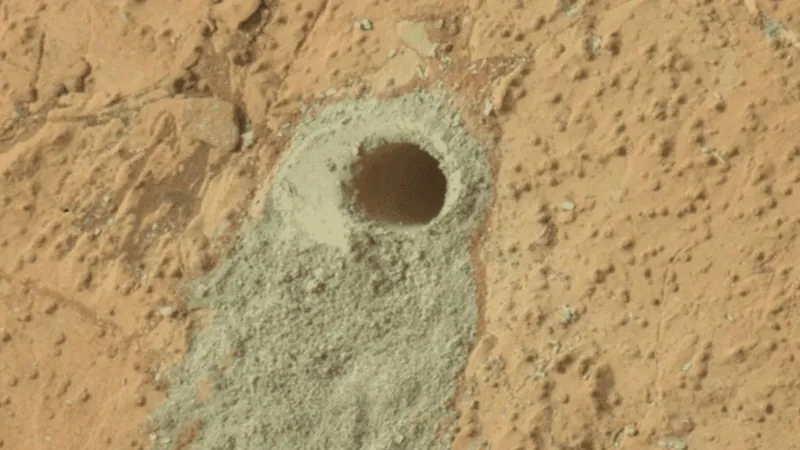
Groundbreaking Discovery: Curiosity Rover Uncovers Largest Organic Molecules Yet on Mars!
2025-03-25
Author: Sophie
Introduction
In an astonishing revelation, scientists have identified the largest organic molecules ever discovered on the Red Planet, Mars. This groundbreaking find raises exciting possibilities about the planet's past and its potential to harbor life.
Discovery Details
The colossal organic compounds may have originated from the breakdown of ancient fatty acids that existed approximately 3.7 billion years ago. These molecules were preserved in sediments formed by an ancient lake within Mars’ Gale Crater.
Although the presence of these molecules does not conclusively prove that life once thrived on Mars, experts assert that the findings bolster the notion that the planet may have once been capable of supporting living organisms.
Scientific Remarks
Caroline Freissinet, an astrochemist from the Laboratoire Atmosphères et Observations Spatiales in Guyancourt, France, stated, “Our study establishes that we can identify chemical signatures possibly linked to past life by analyzing Martian samples.”
Method of Discovery
The alkanes discovered are hydrocarbons characterized by chains of carbon atoms bonded to hydrogen atoms. These molecules were uncovered by NASA's Curiosity rover during a drilling operation on a rock sample from a site known as 'Cumberland,' located in the Yellowknife Bay region of Gale Crater.
Scientific analysis reveals that this crater likely sustained liquid water for millions, if not billions, of years—sufficient time for the complex chemistry that could lead to life.
Study Techniques
The discovery was made utilizing Curiosity’s Sample Analysis on Mars (SAM) suite of instruments, which involves drilling into rocks, heating the samples, and analyzing the resultant gases.
Previous investigations of the Cumberland samples had already yielded smaller organic compounds, but the recent analysis has revealed alkanes with up to 12 carbon atoms, indicating a significant find.
Implications of the Discovery
While it remains plausible that the large Martian alkanes may have a geochemical origin, Freissinet and Glavin's research indicates a compelling possibility that they originate from ancient life forms.
The intriguing timeline of this discovery aligns with the emergence of life on Earth, sparking debates among scientists about the potential for parallel evolutionary histories on both planets.
Future Research Directions
Despite these intriguing findings, the capabilities of the Curiosity rover's SAM instruments limit the exploration of molecules larger than dodecane.
The future of Martian organic chemistry research may depend on future missions aimed at returning samples to Earth for detailed examination.
Conclusion
This remarkable discovery adds another layer to our understanding of Mars, reinforcing its status as a key player in humanity’s quest to uncover the mysteries of life beyond Earth.
With ongoing advancements, who knows what other secrets about our neighboring planet might be waiting to be unearthed? Stay tuned for what could be one of the most thrilling chapters in space exploration yet!









 Brasil (PT)
Brasil (PT)
 Canada (EN)
Canada (EN)
 Chile (ES)
Chile (ES)
 Česko (CS)
Česko (CS)
 대한민국 (KO)
대한민국 (KO)
 España (ES)
España (ES)
 France (FR)
France (FR)
 Hong Kong (EN)
Hong Kong (EN)
 Italia (IT)
Italia (IT)
 日本 (JA)
日本 (JA)
 Magyarország (HU)
Magyarország (HU)
 Norge (NO)
Norge (NO)
 Polska (PL)
Polska (PL)
 Schweiz (DE)
Schweiz (DE)
 Singapore (EN)
Singapore (EN)
 Sverige (SV)
Sverige (SV)
 Suomi (FI)
Suomi (FI)
 Türkiye (TR)
Türkiye (TR)
 الإمارات العربية المتحدة (AR)
الإمارات العربية المتحدة (AR)